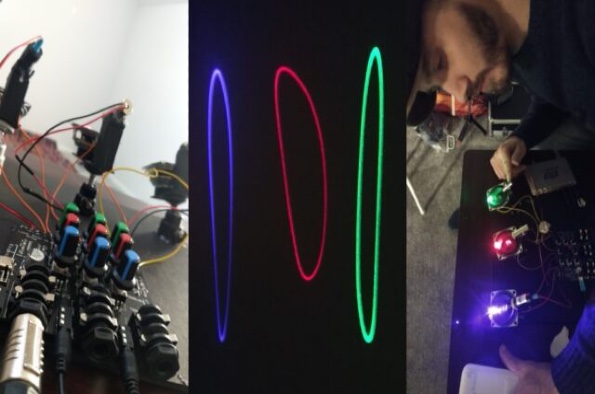
Entwining Science and Music - Concert 4
- Dr Helen Thomas (School of the Arts)
- Suitable for: All welcome
- Admission: Free
- Book now
Add this event to my calendar
Click on "Create a calendar file" and your browser will download a .ics file for this event.
Microsoft Outlook: Download the file, double-click it to open it in Outlook, then click on "Save & Close" to save it to your calendar. If that doesn't work go into Outlook, click on the File tab, then on Open & Export, then Open Calendar. Select your .ics file then click on "Save & Close".
Google Calendar: download the file, then go into your calendar. On the left where it says "Other calendars" click on the arrow icon and then click on Import calendar. Click on Browse and select the .ics file, then click on Import.
Apple Calendar: The file may open automatically with an option to save it to your calendar. If not, download the file, then you can either drag it to Calendar or import the file by going to File >Import > Import and choosing the .ics file.
Entwining Science and Music - Concert 4
Costabile/Levy Organoids
Rajasekar/Clark Spin Excitations
Join here:
https://liverpool-ac-uk.zoom.us/j/99474217473?pwd=V0dNZldobjhpUWRzaE1EWVRJWDIxZz09
Passcode: 4jFcH=.L
Organoids (6'56")
Composer: Ian Costabile, The University of Liverpool
Scientist: Dr Raphael Levy, Senior Lecturer Biochemistry, The University of Liverpool
Dr Raphael Levy is now Professor of Physics at the University Paris Sorbonne.
This piece was inspired by the work of Dr Raphael Levy and microscopy techniques which employ laser beams for scanning biological cells. Lasers have multiple applications in several fields and in music they can be used for amplifying acoustic vibrations, translating sound stimulus to the visual domain. For this, a mirror can be placed on a tuning fork, which vibrates and reflects the laser beam. The resulting effect is known as Lissajous Figure.
For this composition, a device comprised of three lasers and mirrors placed on small loudspeakers was developed. The device responds to the microphone input from three instruments: bass flute, violoncello and baritone saxophone. This instrumentation was chosen due to their similar range aspect, allowing instruments to harmonise in low frequencies corresponding to the device’s tuning resonance.
Finally, the title, Organoids, suggests a metaphor for the organic essence of each instrument, as if they behaved as organoids in the process of microscopy imaging. Organoids are simplified versions of organs produced in vitro (outside an organism).
For further information: https://www.rncm.ac.uk/research/research-centres-rncm/prism/prism-blog/prism-8-cubed/organoids/
Spin Excitations (5'18")
Composer: Shruthi Rajasekar, RNCM
Scientist: Dr Lucy Clark, Materials Innovation Factory, The University of Liverpool
Dr Clark is now Senior Lecturer in the School of Chemistry at The University of Birmingham.
Spin Excitations is a musical modeling of magnetic moments at the quantum level. Researchers developing materials known as quantum spin liquids seek to maximise their short-range order by harnessing quantum fluctuations. Their systems must consequently balance regularity and chaos. When working with such novel materials and techniques, scientists must also give way to the humbling concept of emergence: the possibility of small and simple components coalescing into a synergetic, complex, and unexpected creation.
Further information at https://www.rncm.ac.uk/research/research-centres-rncm/prism/prism-blog/prism-8-cubed/spin-excitations/
